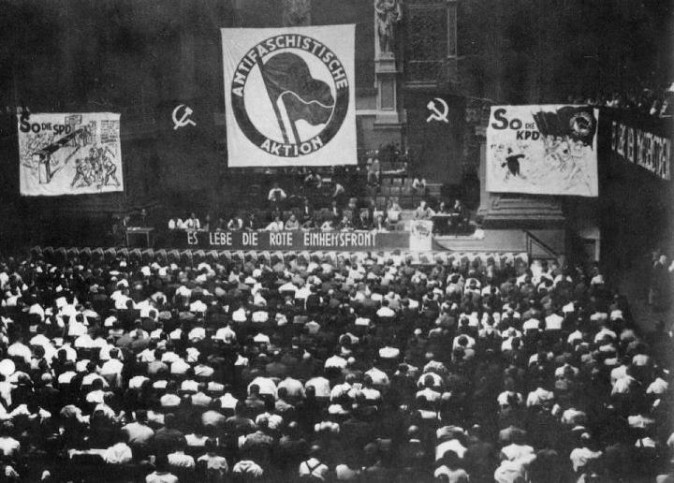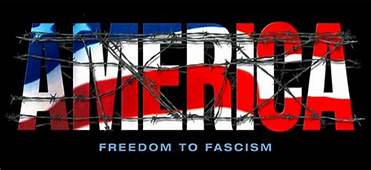Do not be tempted for one moment to believe the lies that have been floated by leftist leaders for several years now that Black Lives Matter (BLM) and Antifa are little more than social/political organizations founded to promote the good things that have been integral parts of the United States since its founding. Neither group represents the fundamentals of “Equal Justice Under the Law,” a guarantee to the “pursuit of happiness,” or even “Freedom and Justice for All.” Though they cloak their mantra wrapped in utopian “wrapping paper,” NOTHING about either is as pictured by their leaders.
So what are the truths about each organization? Who can we believe? Both tell the World they are for the guarantees of freedom for all, tearing down the instruments of tyranny that supposedly exist in the American government, its leaders, and the way the nation treats its citizens; that human rights are controlled by a small group of racist fascists in Washington D.C. who must be removed from power no matter what the costs.
Their mantra is not true and their stated structure and ideals, plans, and intentions are anything BUT what they tell American citizens.
Today (Monday) and tomorrow (Tuesday) we will here give you a skeleton of the history and purpose of each group. The information we share with you will be historical, factual, and verifiable. We encourage you to digest what you see here at TruthNewsNetwork and then verify facts for yourselves. Let’s get started with “Antifa,” simply for alphabetical reasons!
Antifa Unmasked
The extremist anarchist-communist group Antifa has been in the headlines because of past violent clashes in Charlottesville, Virginia, then Portland, Oregon, and most recently, in numerous other cities across America. Yet while the organization has been applauded by some left-leaning news outlets for including white nationalists and neo-Nazis in its list of targets, the organization wasn’t always about targeting “fascism,” as it claims.
The organization was initially part of the Soviet Union’s front operations to bring about communist dictatorship in Germany, and it worked to label all rival parties as “fascist.”
The organization can be traced to the “united front” of the Soviet Union’s Communist International (Comintern) during the Third World Congress in Moscow in June and July 1921, according to the German booklet “80 Years of Anti-Fascist Action” by Bernd Langer, published by the Association for the Promotion of Anti-Fascist Culture. Langer is a former member of the Autonome Antifa, formerly one of Germany’s largest Antifa organizations, which disbanded in 2004.
The Soviet Union was among the world’s most violent dictatorships, killing an estimated 20 million people, according to “The Black Book of Communism,” published by Harvard University Press. The Soviet regime is second only to the Chinese Communist Party under Mao Zedong, which killed an estimated 65 million people.
The idea of the united front strategy was to bring together left-wing organizations in order to incite the communist revolution. The Soviets believed that following Russia’s revolution in 1917, communism would next spread to Germany since Germany had the second-largest communist party, the KPD (Communist Party of Germany).
It was at the Fourth World Congress of the Comintern in 1922 that the plan took shape. Moscow formed the slogan “To the Masses” for its united front strategy and sought to join together the various communist and workers’ parties of Germany under a single ideological banner that it controlled. “The ‘unified front’ thus did not mean equal cooperation between different organizations, but the dominance of the workers’ movement by the communists,” Langer writes.
Benito Mussolini, a Marxist and socialist who had been expelled from Italy’s Socialist Party in 1914 for his support for World War I, later founded the fascist movement as his own political party. He took power through his “March on Rome” in October 1922.
In Germany, Adolf Hitler became head of the National Socialist German Workers’ Party (Nazi Party) in 1921 and mounted a coup attempt in 1923.
The KPD decided to use the banner of anti-fascism to form a movement. Langer notes, though, that to the KPD, the ideas of “fascism” and “anti-fascism” were “undifferentiated,” and the term “fascism” served merely as rhetoric meant to support their aggressive opposition. Both the communist and fascist systems were based in collectivism and state-planned economies. Both also proposed systems wherein the individual was heavily controlled by a powerful state, and both were responsible for large-scale atrocities and genocide.
The 2016 annual report by Germany’s domestic intelligence service, the Federal Office for the Protection of the Constitution (BfV), notes the same point: From the viewpoint of the “left-wing extremist,” the label of “fascism” as pushed by Antifa often does not refer to actual fascism, but is merely a label assigned to “capitalism.”
While leftist extremists claim to be fighting “fascism” while launching their attacks on other groups, the report states the term “fascism” has a double meaning under the extreme-left ideology, indicating the “fight against the capitalist system.” This held true from the beginning, according to Langer. For the communists in Germany, “anti-fascism” merely meant “anti-capitalism.” He notes the labels merely served as “battle concepts” under a “political vocabulary.” A description of Antifa on the BfV website notes that the organization still holds this same basic definition of capitalism as being “fascism.” “They argue that the capitalist state produces fascism, or at least tolerates it. Therefore, anti-fascism is directed not only against actual or supposed right-wing extremists but also always against the state and its representatives, in particular members of the security authorities,” it states.
Langer notes that historically, by labeling the anti-capitalist interests of the communist movement as “anti-fascism,” the KPD was able to use this rhetoric to label all other political parties as fascist. Langer states, “According to this, the other parties opposed to the KPD were fascist, especially the SPD [Social Democratic Party of Germany].” Thus, in what would today be considered ironic, the group that the communist “anti-fascists” most heavily targeted under their new label of “fascism” was the social democrats.
On Aug. 23, 1923, the Politburo of the Communist Party of Russia held a secret meeting, and according to Langer, “all the important officials spoke out for an armed insurrection in Germany.” The KPD was at the front of this call, launching a movement under the banner of United Front Action and branding its armed “anti-fascist” wing under the name Antifaschistische Aktion (“Antifascist Action”), which Antifa still carries in Germany, and from which the Antifa organizations in other countries are rooted.

At this time, Hitler and his Nazi Party had begun to emerge on the world stage, and the Nazi Party employed a similar group to Antifaschistische Aktion for political violence and intimidation, called the “brownshirts.”
Antifaschistische Aktion, meanwhile, began to attract some members who opposed the arrival of actual fascism in Germany and who did not subscribe to — or were potentially unaware of — the organization’s ties to the Soviet Union. However, the violence instigated by Antifaschistische Aktion largely had an opposite effect. The ongoing tactics of violence and intimidation of all rival systems under the Antifa movement, along with its violent ideology, drove many people toward fascism.
“The Communists’ violent revolutionary rhetoric, promising the destruction of capitalism and the creation of a Soviet Germany, terrified the country’s middle class, who knew only too well what had happened to their counterparts in Russia after 1918,” writes Richard J. Evans in “The Third Reich in Power.”
Langer notes that from the beginning, the KPD was a member of the Comintern, and “within a few years, it became a Stalinist party,” both ideologically and logistically. He states that it even became “financially dependent on the Moscow headquarters.”
Leaders of the KPD, with Antifa as their on-the-ground movement for violence and intimidation of rival political parties, fell under the command of the Soviet apparatus. Many KPD leaders would later become leaders in the communist German Democratic Republic, including its infamous Ministry for State Security, the Stasi.
As Langer states, “anti-fascism is a strategy rather than an ideology.” “It was brought into play in Germany in the 1920s by the KPD,” not as a legitimate movement against the fascism that would later arise in Germany, but instead “as an anti-capitalist concept of struggle,” he writes.
Summary
I know: this report is filled with names and name-abbreviations and includes much information. We Americans have lost any real sense of the necessity of the knowledge of our pasts. In almost every other country, the importance of history which shaped the present in every aspect of those nations is viewed by leaders as critical. Not so much in the U.S. In fact, World History is scarce in high school and college campuses. Civics which was once a staple of understanding of how our government works was removed from the History curriculum in our public schools. But, as you can see, knowing the historical foundations and basis for the existence of the various political and social groups who are today shaping the landscape of what our Nation is to become in their eyes is not just important, it is critical.
How do we do that without diving in to learn the facts of our origins, our past, and the past attempts to instigate totalitarian ideals here that other countries faced and defeated generations ago?
Antifa from its roots to its blooming today in America is evil. And if allowed to continue its unabated growth will undoubtedly usher in an oppressive government led by despots with their hunger for totalitarian control.
Before you dismiss the previous sentence, consider this: Italians, Germans, Polish People, Czech citizens, and other Europeans dismissed what they heard that was identical to this same warning, saying: “That can never happen here!”
Communism is estimated to have killed at least 100 million people, yet its crimes have not been fully compiled and its ideology still persists. The Epoch Times seeks to expose the history and beliefs of this movement, which has been a source of tyranny and destruction since it emerged. Read the whole series at ept.ms/TheDeadEndCom


BLM SUXS